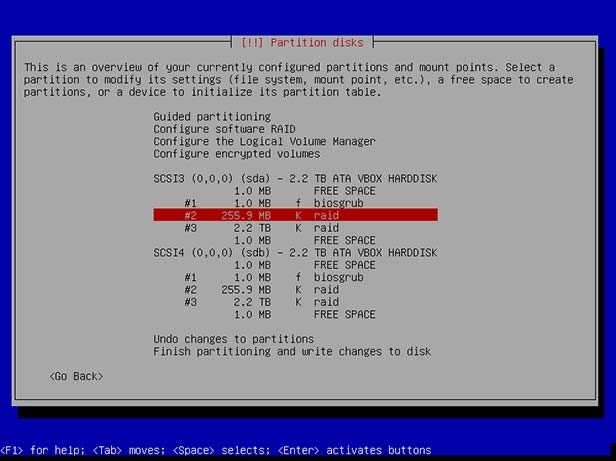

At this phase you will want to select the primary partition. Here we have a standard ext4 primary partition and a swap partition. Ubuntu RAID 1 – Step 4 Automatically Partition

On the other hand, if you just want to get this done quickly, then you can select “Automatically partition the free space” and Ubuntu will automate that process. If you know what you are doing, you can likely do manual partitions without issue. You will now be left with FREE SPACE which we will format into something more usable. Ubuntu RAID 1 – Step 2 Remove Existing Partitions Select the disk you want to begin with and start partitioning. We are starting with sda in this example. The HP 200GB SLC SAS SSD (sdd) will be a ZIL drive in the future and the four 4TB WD SAS drives are going to be storage disks. The second disk, sdb had a Windows installation previously. One can see that sda (the first disk) has a full 256GB of FREE SPACE. loose cable.) The first step is generally to select the disk you want to partition. If not, troubleshoot why the disks are not available (e.g. Step 1 in the process is ensuring that your disks are listed. For this guide we are interested in the partitioning step. One then needs to proceed through the customary installation steps such as selecting a keyboard layout. The first step is to insert installation media into the machine and boot the machine. We keep sets of SSDs available in the lab so these drives can be considered “well used” at this point. Installing Ubuntu server with software RAID 1įor this guide we are using two Samsung 830 256GB SSDs. You do not need to use any special hardware RAID adapters with this guide, onboard SATA will work fine. This guide will get you setup with md RAID 1 in less than 5 minutes.

the now familiar backplane “zap of death”) that can take both drives out simultaneously. On the other hand, there are environmental factors (e.g. With SSDs being both smaller and faster than the large 3.5″ capacities, RAID 1 with fast replacement or a hot spare can significantly decrease the chance of data loss. The main reason to use RAID 1 is to provide a level of reliability in a system. There are a few minor differences between doing this on 14.04 LTS and older versions that many guides are written for but the process is generally similar. This guide will show how one can use mdadm to install Ubuntu server on a RAID 1 setup. Ubuntu RAID 1 - Step 18 finish partitioning and write changes


 0 kommentar(er)
0 kommentar(er)
